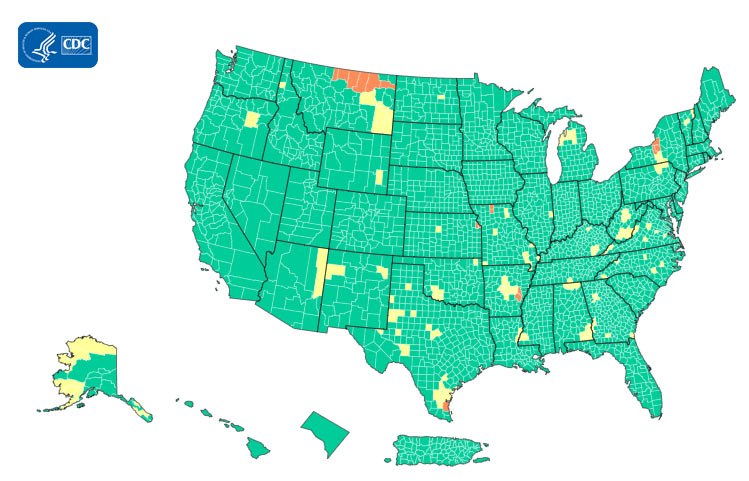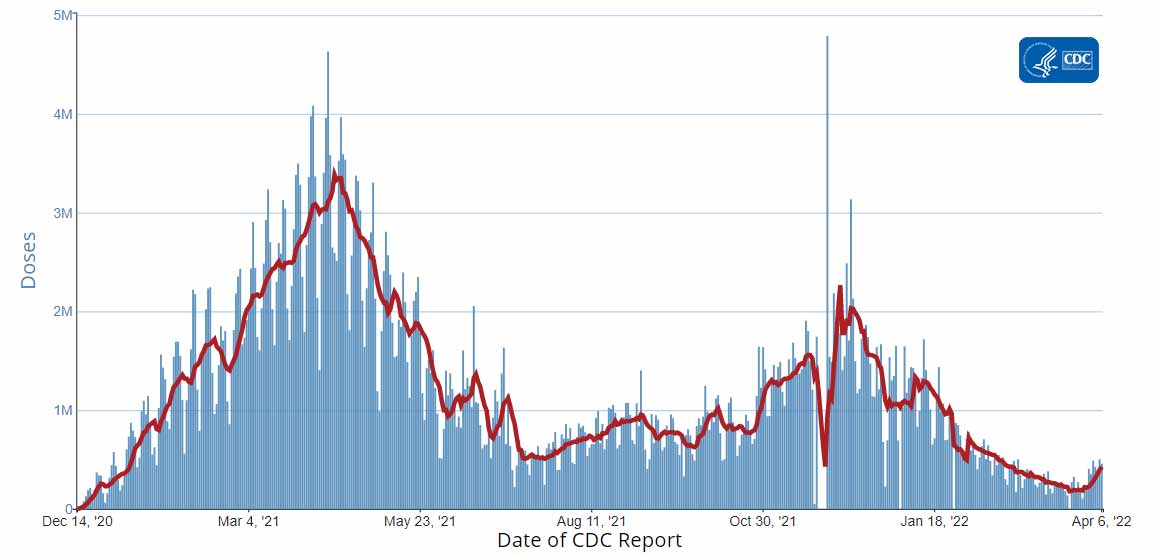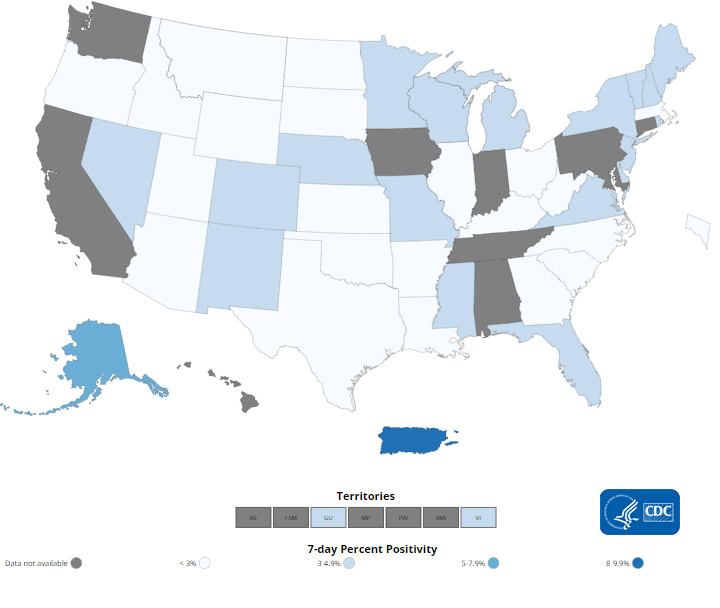Recommendations for Fully Vaccinated People
COVID-19 Homepage
Vaccines Protect Children
Interpretive Summary for April 8, 2022
Vaccines Protect Children
The United States has made tremendous progress in the fight against COVID-19. Cases, hospitalizations, and deaths continue to decline across the country, and millions of people are at much lower risk of getting very sick from COVID-19.
As of April 6, 2022, 22.8 million children and adolescents ages 5–17 years have received their primary series of a COVID-19 vaccine and are considered fully vaccinated. Approximately 23.7% of fully vaccinated adolescents ages 12–17 years have also received a booster dose, which provides the best protection against severe COVID-19.* Recent studies show that vaccination continues to protect children and adolescents against emergency department/urgent care visits, hospitalizations, and death associated with the Omicron variant.
But vaccination rates remain low among children ages 5–11 years, leaving them more vulnerable to serious disease. Cases, hospitalizations, and deaths are decreasing right now, but there is still ongoing community transmission. While children have a lower risk for severe COVID-19 compared to older adults, they can still get it, spread the virus to others, and become seriously ill—and there is no way to tell in advance which child will get a mild or severe case.
COVID-19 vaccines have undergone—and continue to undergo—the most intensive safety monitoring in U.S. history, and adverse events are rare. Vaccinating children is the single best way to protect them from severe illness associated with COVID-19. Find a vaccine provider near you at vaccines.gov.
*People ages 12 years and older who are moderately or severely immunocompromised have specific COVID-19 vaccine recommendations, including recommendations for a booster dose. Learn more about COVID-19 vaccine recommendations for people who are moderately or severely immunocompromised.
- COVID Data Tracker’s Wastewater Surveillance tab now displays data showing levels of SARS-CoV-2 (the virus that causes COVID-19) in wastewater in participating communities across the United States. The current SARS-CoV-2 levels for each site are shown as a comparison to past levels at that site.
- Notes from the Field: SARS-CoV-2 Omicron Variant Infection in 10 Persons Within 90 Days of Previous SARS-CoV-2 Delta Variant Infection — Four States, October 2021–January 2022
- COVID-19 Mortality and Vaccine Coverage — Hong Kong Special Administrative Region, China, January 6, 2022–March 21, 2022
COVID-19 Community Levels
On February 25, 2022, CDC updated the way it monitors COVID-19’s impact on our communities. Widespread availability of vaccines and testing, advances in treatments, and increasing levels of immunity in the population through vaccination or previous infection have moved the COVID-19 pandemic to a new phase. While we can’t prevent all cases of COVID-19, we can continue to limit the spread and protect those who are most at risk of severe illness.
Currently, there are 18 (0.56%) counties with a high COVID-19 Community Level, 122 (3.79%) counties with a medium Community Level, and 3,080 (95.65%) counties with a low Community Level. This represents a very slight (0.16%) increase in the number of high-level counties, a small (−0.75%) decrease in the number of medium-level counties, and a corresponding (+0.59%) increase in the number of low-level counties. Twenty-one (40.38%) of 52 jurisdictions had no high- or medium-level counties this week.
To check your COVID-19 community level, visit COVID Data Tracker.
Reported Cases
As of April 6, 2022, the current 7-day moving average of daily new cases (26,596) increased 4.9% compared with the previous 7-day moving average (25,363). A total of 80,111,065 COVID-19 cases have been reported in the United States as of April 6, 2022.
CDC Nowcast projections* for the week ending April 2, 2022, estimate the combined national proportion of lineages designated as Omicron to be 100%. There are five lineages designated as Omicron: B.1.1.529, BA.1, BA.1.1, BA.2, and BA.3. COVID Data Tracker shows the proportions of the B.1.1.529 lineage (includes BA.1 and BA.3), the BA.1.1** lineage, and the BA.2 lineage. The predominant Omicron lineage in the United States is BA.2. The national proportion of BA.2 is projected to be 72.2% (95% PI 68.1-75.9%). BA.1.1 is projected to be 25.3% (95% PI 21.9-29.1%) and B.1.1.529 (BA.1 and BA.3) is projected to be 2.5% (95% PI 2.0-3.2%). Omicron is predicted to be 100% in all HHS regions.
80,111,065
Total Cases Reported
80,111,065
Total Cases Reported
26,596
Current 7-Day Average***
26,596
Current 7-Day Average***
25,363
Prior 7-Day Average
25,363
Prior 7-Day Average
4.9%
Change in 7-Day Average since Prior Week
4.9%
Change in 7-Day Average since Prior Week
*The median time from specimen collection to sequence data reporting is about 3 weeks. As a result, weighted estimates for the most recent few weeks may be unstable or unavailable. CDC’s Nowcast is a data projection tool that helps fill this gap by generating timely estimates of variant proportions for variants that are circulating in the United States. View Nowcast estimates on CDC’s COVID Data Tracker website on the Variant Proportions page.
**For national data, the proportion of BA.1.1 is shown separately. For regional data, the proportion of BA.1.1 is also aggregated with B.1.1.529.
***Historical cases are excluded from daily new cases and 7-day average calculations until they are incorporated into the dataset for the applicable date. Of 517,338 historical cases reported retroactively, 12,690 were reported in the current week and 18,610 were reported in the prior week.
Vaccinations
The U.S. COVID-19 Vaccination Program began December 14, 2020. As of April 6, 2022, 563.4 million vaccine doses have been administered in the United States. Overall, about 255.9 million people, or 77.1% of the total U.S. population, have received at least one dose of vaccine. About 218.0 million people, or 65.7% of the total U.S. population, have been fully vaccinated.* Of those fully vaccinated, about 98.3 million people have received a booster dose,** but 49.7% of the total booster-eligible population has not yet received a booster dose. As of April 6, 2022, the 7-day average number of administered vaccine doses reported (by date of CDC report) to CDC per day was 424,670, a 98.1% increase from the previous week.
CDC’s COVID Data Tracker displays vaccination trends by age group, race/ethnicity, and urban/rural status. To see trends by age group and race/ethnicity, visit the Vaccination Demographic Trends tab. To see trends by urban/rural status, visit the COVID-19 Vaccination Equity tab.
563,391,773
Vaccine Doses Administered
563,391,773
Vaccine Doses Administered
255,873,739
People who received at least one dose
255,873,739
People who received at least one dose
218,043,500
People who are fully vaccinated*
218,043,500
People who are fully vaccinated*
77.1%
Percentage of the U.S. population that has received at least one dose
77.1%
Percentage of the U.S. population that has received at least one dose
65.7%
Percentage of the U.S. population that has been fully vaccinated*
65.7%
Percentage of the U.S. population that has been fully vaccinated*
+0.2
Percentage point increase from last week
+0.2
Percentage point increase from last week
+0.2
Percentage point increase from last week
+0.2
Percentage point increase from last week
*Represents the number of people who have received the second dose in a two-dose COVID-19 vaccine series (such as the Pfizer-BioNTech or Moderna vaccines) or one dose of the single-shot Johnson & Johnson’s Janssen vaccine.
**Represents the number of people who are fully vaccinated and have received another dose of COVID-19 vaccine since August 13, 2021. This includes people who received their first additional dose or booster dose.
Hospitalizations
New Hospital Admissions
The current 7-day daily average for March 30–April 5, 2022, was 1,406. This is a 10.3% decrease from the prior 7-day average (1,567) from March 23–29, 2022.
4,602,171
Total New Admissions
4,602,171
Total New Admissions
1,406
Current 7-Day Average
1,406
Current 7-Day Average
1,567
Prior 7-Day Average
1,567
Prior 7-Day Average
-10.3%
Change in 7-Day Average
-10.3%
Change in 7-Day Average
The start of consistent reporting of hospital admissions data was August 1, 2020.
Daily Trends in Number of New COVID-19 Hospital Admissions in the United States
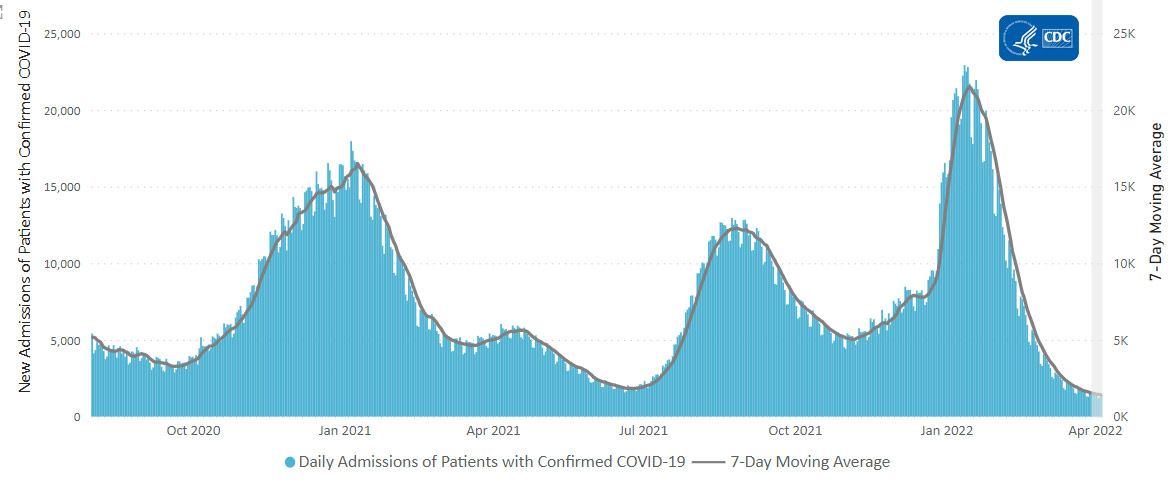
New admissions are pulled from a 10 am EDT snapshot of the HHS Unified Hospital Data – Analytic Dataset. Due to potential reporting delays, data from the most recent 7 days, as noted in the figure above with the grey bar, should be interpreted with caution. Small shifts in historic data may also occur due to changes in the Centers for Medicare & Medicaid Services (CMS) Provider of Services file, which is used to identify the cohort of included hospitals.
COVID-NET: Hospitalization Rates by Vaccination Status in Adolescents Ages 12–17 Years
CDC’s Coronavirus Disease 2019-Associated Hospitalization Surveillance Network (COVID-NET) shows that rates of COVID-19-associated hospitalizations in February 2022 were 2.2 times as high among unvaccinated adolescents ages 12–17 years compared to adolescents who received a primary vaccination series plus a booster or additional dose of COVID-19 vaccine.*
*Compared to older age groups, adolescents ages 12–17 years have very low rates of hospitalization for any vaccination status. As a result, hospitalization rates by vaccination status for this age group might have more week-to-week variability due to small sample sizes.
Rates of COVID-19-Associated Hospitalizations by Vaccination Status in Adolescents Ages 12–17 Years, February 2022
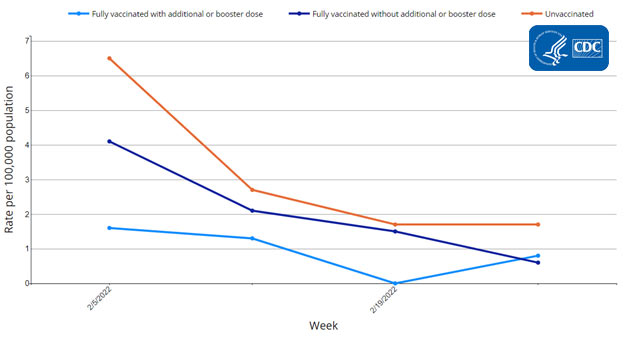
The Coronavirus Disease 2019 (COVID-19)-Associated Hospitalization Surveillance Network (COVID-NET) is an additional source for hospitalization data collected through a network of more than 250 acute-care hospitals in 14 states (representing ~10% of the U.S. population). Detailed data on patient demographics, including race/ethnicity, underlying medical conditions, medical interventions, and clinical outcomes, are collected using a standardized case reporting form.
Deaths
The current 7-day moving average of new deaths (497) has decreased 22.1% compared with the previous 7-day moving average (638). As of April 6, 2022, a total of 981,197 COVID-19 deaths have been reported in the United States.
981,197
Total Deaths Reported
981,197
Total Deaths Reported
497
Current 7-Day Average*
497
Current 7-Day Average*
638
Prior 7-Day Average
638
Prior 7-Day Average
-22.1%
Change in 7-Day Average Since Prior Week
-22.1%
Change in 7-Day Average Since Prior Week
*Historical deaths are excluded from the daily new deaths and 7-day average calculations until they are incorporated into the dataset by their applicable date. Of 20,744 historical deaths reported retroactively, none were reported in the current week; and none were reported in the prior week.
Daily Trends in Number of COVID-19 Deaths in the United States Reported to CDC

7-Day moving average
 More Death Data
More Death DataTesting
The percentage of COVID-19 NAATs (nucleic acid amplification tests)* that are positive (percent positivity) is increasing in comparison to the previous week. The 7-day average of percent positivity from NAATs is now 3.1%. The 7-day average number of tests reported for March 25-31, 2022, was 716,261, down 14.6% from 839,037 for the prior 7 days.
852,074,657
Total Tests Reported
852,074,657
Total Tests Reported
716,261
7-Day Average Tests Reported
716,261
7-Day Average Tests Reported
3.1%
7-Day Average % Positivity
3.1%
7-Day Average % Positivity
2.4%
Previous 7-Day Average % Positivity
2.4%
Previous 7-Day Average % Positivity
+0.69
Percentage point change in 7-Day Average % Positivity since Prior Week
+0.69
Percentage point change in 7-Day Average % Positivity since Prior Week
*Test for SARS-CoV-2, the virus that causes COVID-19


